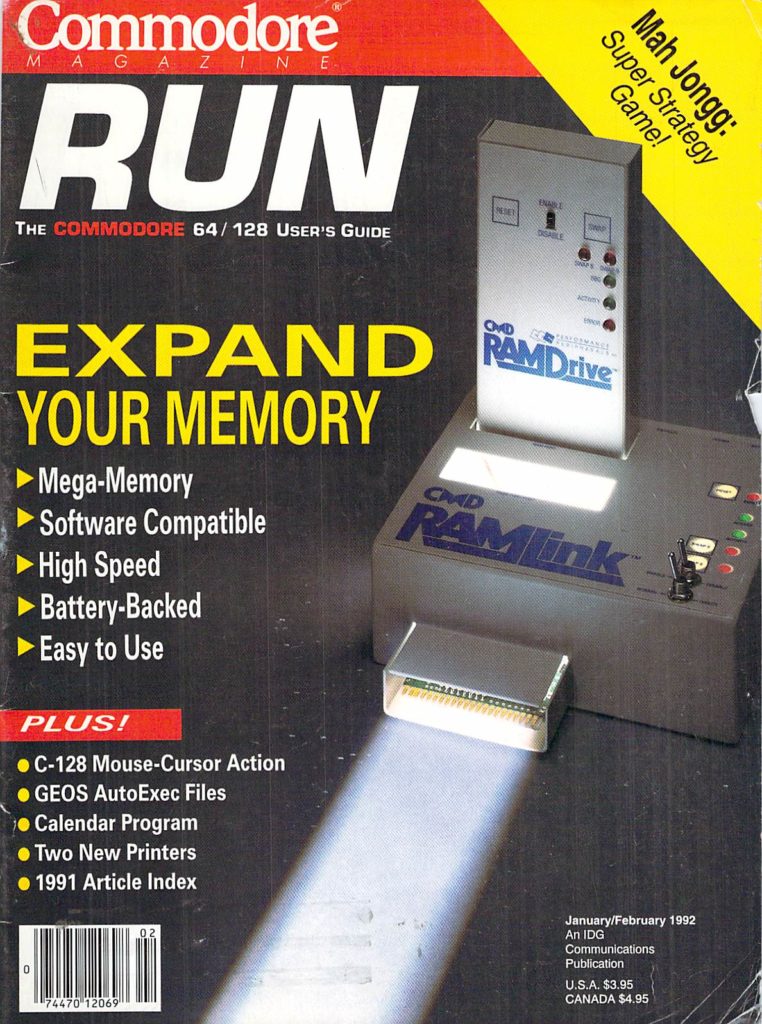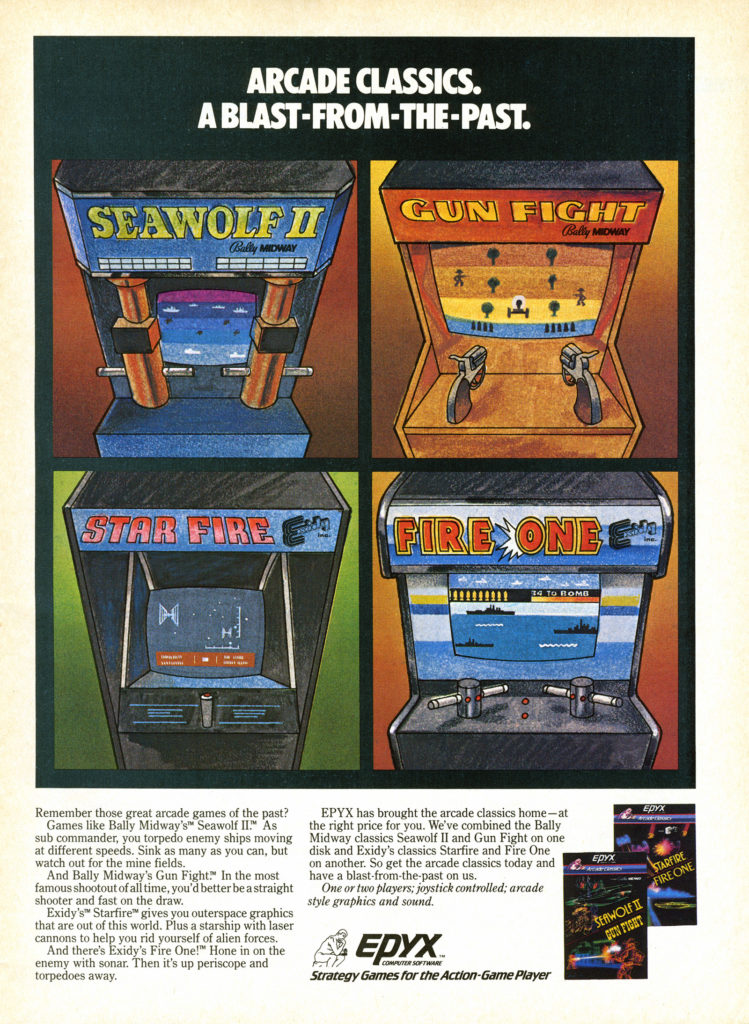Source: RUN – The Commodore 64/128 User’s Guide – Issue Number 89 – January February 1992
RUN was the last surviving major Commodore 64 magazine in the U.S. Compute!’RUN was the last surviving major Commodore 64 magazine in the U.S. Compute!’s Gazette lasted a little longer as an insert and then as a disk only magazine. 1992 was very late in the life of the Commodore 64 and it was pretty clear that the writing was on the wall for that machine. The January/February 1992 issue of RUN only had about 64 pages and it started shrinking significantly after that. The contents includes:
Features
- Hardware RAMpage – An overview of the powerful expansions available for the Commodore 64. These include the RAMLink which was a device that let you use older Commodore 64 memory expansions (REUs) or the newer RAMdrive as a RAM drive. The RAMdrive could be used with the RAMLink or by itself. Both the RAMDrive and RAMLink were about $200 each (before adding RAM). The RAMDrive could hold up to 2 MB.
- Mah Jongg – Type-in game but unfortunately this is the tile matching variety as opposed to the actual game of Mahjong.
- Past, Present and Future – A type-in calendar/planner/memo book. It also came with the ability to use a mouse which couldn’t be taken for granted with the C64.
- Hip Hop – A type-in game that is a bit reminiscent of Q*Bert.
- Perfect Companions – A review of two different Panasonic dot matrix printers including the KX-P1123 for $399.95 and the KX-P1124i for $499.95.
- File Packer – A type-in file compressor for the Commodore 64.
Departments
- RUNning Ruminations – The Commodore 64 survives another year with a new CEO at Commodore, actually increased support for the C64 from Commodore and a new trade-in program. Also, Ultima VI and a new version of Word Writer were a couple of big 1991 releases and there were even rumors of an accelerator chip for the Commodore 128.
- Magic – Short programs to create buzzword phrases, fake a reset of the Commodore 64, hide files in GEOS, create a 2nd screen that can be toggled to, and more.
- News and New Products – New products include a new AD&D Gold Box game, Gateway to the Savage Frontier; Elvira: Mistress of the Dark; Dr. Evil Laboratories (provides support for CMD among other things) announces that it will cease all operations; Hangman’s Hazard; Tie Break Tennis; M1 Librarian (MIDI library package); Calc II (spreadsheet); Chip’s Challenge (a puzzle game from Epyx). Also, according to the SPA, at this time the Commodore 64 was the 3rd largest platform for computer games behind the IBM (DOS) and Amiga. This means it beats out the Atari ST, Macintosh, Apple II, Apple IIgs and Atari 8-bit.
- Mail RUN – Letters from readers about finding Commodore 64 software, word processors on cartridge, converting graphics files, and the future of Commodore among other topics.
- Software Gallery
- Iron Lord – A fantasy RPG/action/strategy hybrid game from Europe.
- Golden Axe – A pretty good conversion of the arcade classic.
- SEC Check Register 128 – A checking account manager that includes check printing and tracking loans and investments.
- The Amazing Spider-Man – An ok action game featuring Spider-Man.
- geoWatch – How to automate actions in GEOS during startup.
- 128 Mode – A rewrite of the 1351 mouse driver for the Commodore 128 in 40-column mode that lets you actually move the cursor.
- Commodore Clinic – Questions answered about the Star NX1000C printer and GEOS, the Commodore 1526 printer and graphics, CP/M cartridges for the Commodore 64, and using an AT&T 4000 modem with a Commodore 128.
- Gold Mine – Game tips and tricks for Amazing Spider-Man, Baal, Back to the Future Part II, Beyond Zork, Carmen Sandiego, Castlevania, Dragon Wars, Flight Simulator, Gary Kitchen’s Gamemaker, Kings of the Beach, Sky Shark, Strike Aces, and Teenage Mutant Ninja Turtles.
- Coming Attractions – The next issue will include REU modifications, a type-in graphics capture and manipulation program, and a type-in air hockey game among many other things.

… and more!



